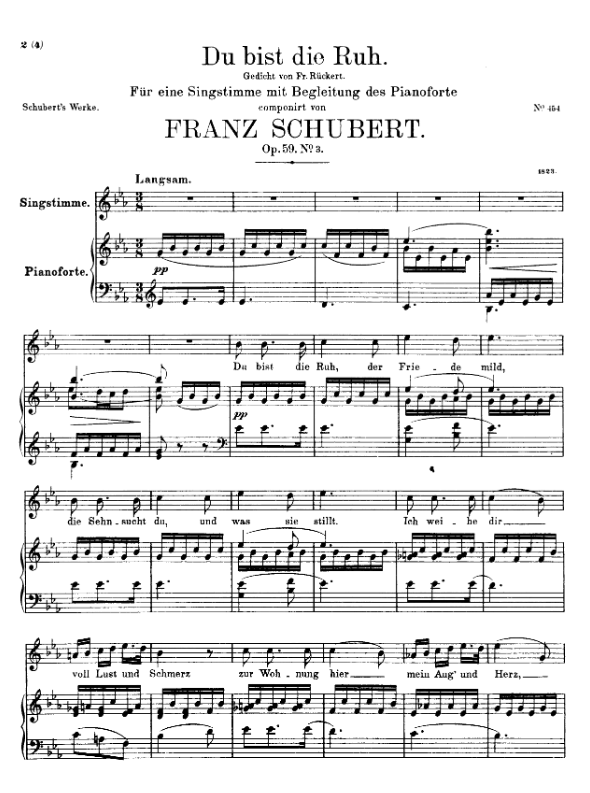The song begins with lively sixteenth notes in triple meter. The piano introduction revolves around the key of E-flat major. The very first verse addresses the object of longing, "you," and connects it with tranquility, peace, and the stilling of longing. A simple melody, played pianissimo and marked larghetto (quite slow), gradually ascends and is repeated after the first four bars. The piano, with its consistently low C, contributes to the overall mood of tranquility.
With the religious phrase "I consecrate," the harmony shifts, expressing pain and tension through secondary dominant and leading-tone chords. On "My eye and heart," the voice becomes more agitated, repeating the text and concluding with an inviting phrase that lingers in the ear. Throughout the song, Schubert places words like "joy" on the tonic and words like "pain" on the dominant chords.
After a quiet, yet harmonically meandering piano introduction over a low E-flat, the melody is almost exactly repeated in the next two verses.
Textually, Rückert focuses on the central theme: the act of love, the arrival of love in the lover's heart. Rückert also titled a later edition of the poem "Return to Me."
Here, too, the final words are repeated at the end, effectively prolonging the harmonic resolution with the same striking melodic turn.
In Schubert's version, the main message of the song now follows in the third and final section: The eye is filled with the light radiating from love. After the transition, the last verse begins, as before, on E-flat. After two bars, where C minor had previously followed, Schubert now modulates to C-flat major, a key far removed from the E-flat major scale, creating a dazzling effect. The voice becomes emphatic. Moreover, the melody ascends radiantly, step by step, over unfamiliar chords and parallel fifths up to the seventh, and, after daring harmonic progressions and tension, ends once more, "illuminated," in A-flat major. Only in a long, sustained silence does it come to rest, exhausted.
The plea at the end of this love prayer adopts the previous musical turns. However, the voice does not end on E-flat, but on the fifth B-flat and the open dominant seventh chord, expectant and upward-reaching. Only the piano then brings the concluding E-flat lower.

